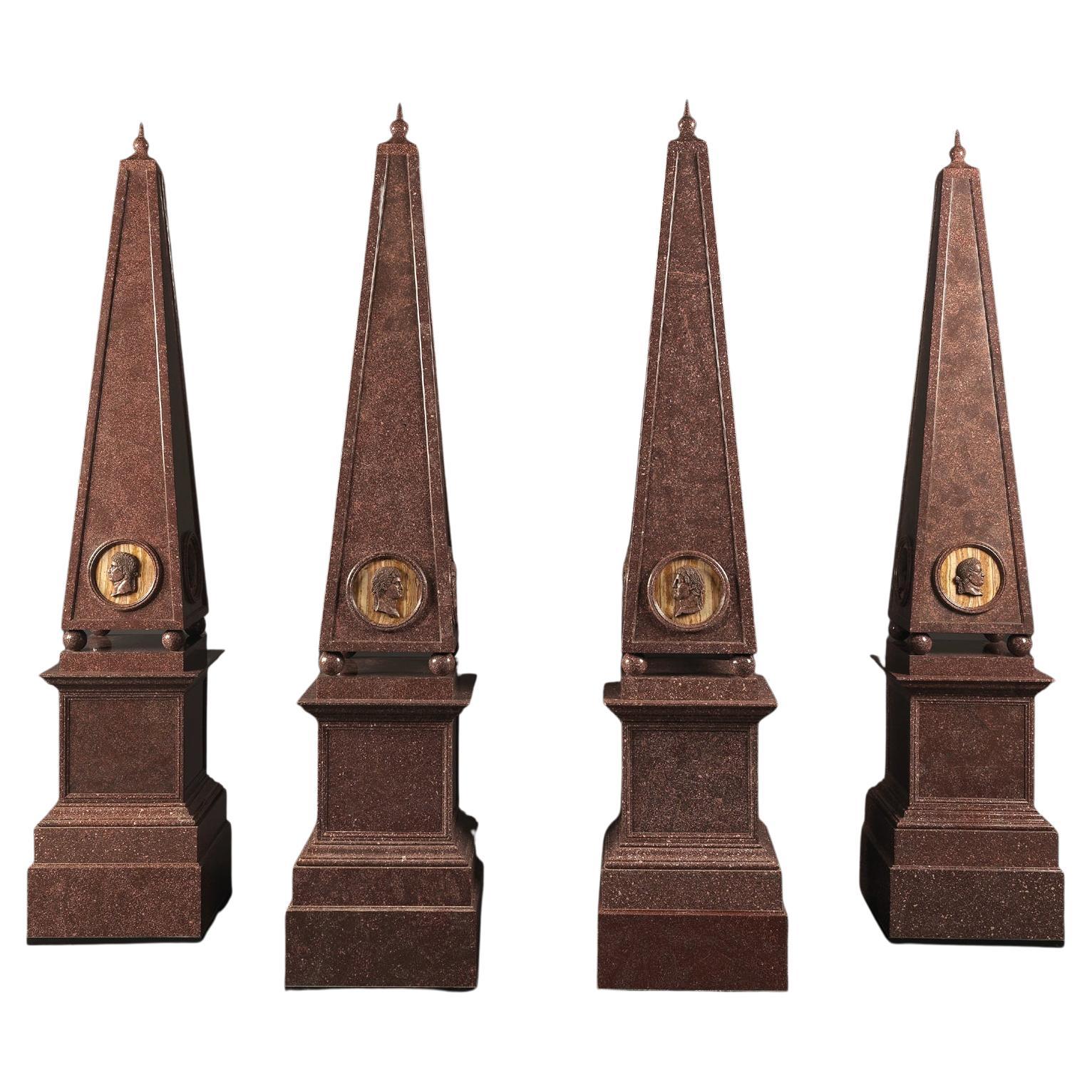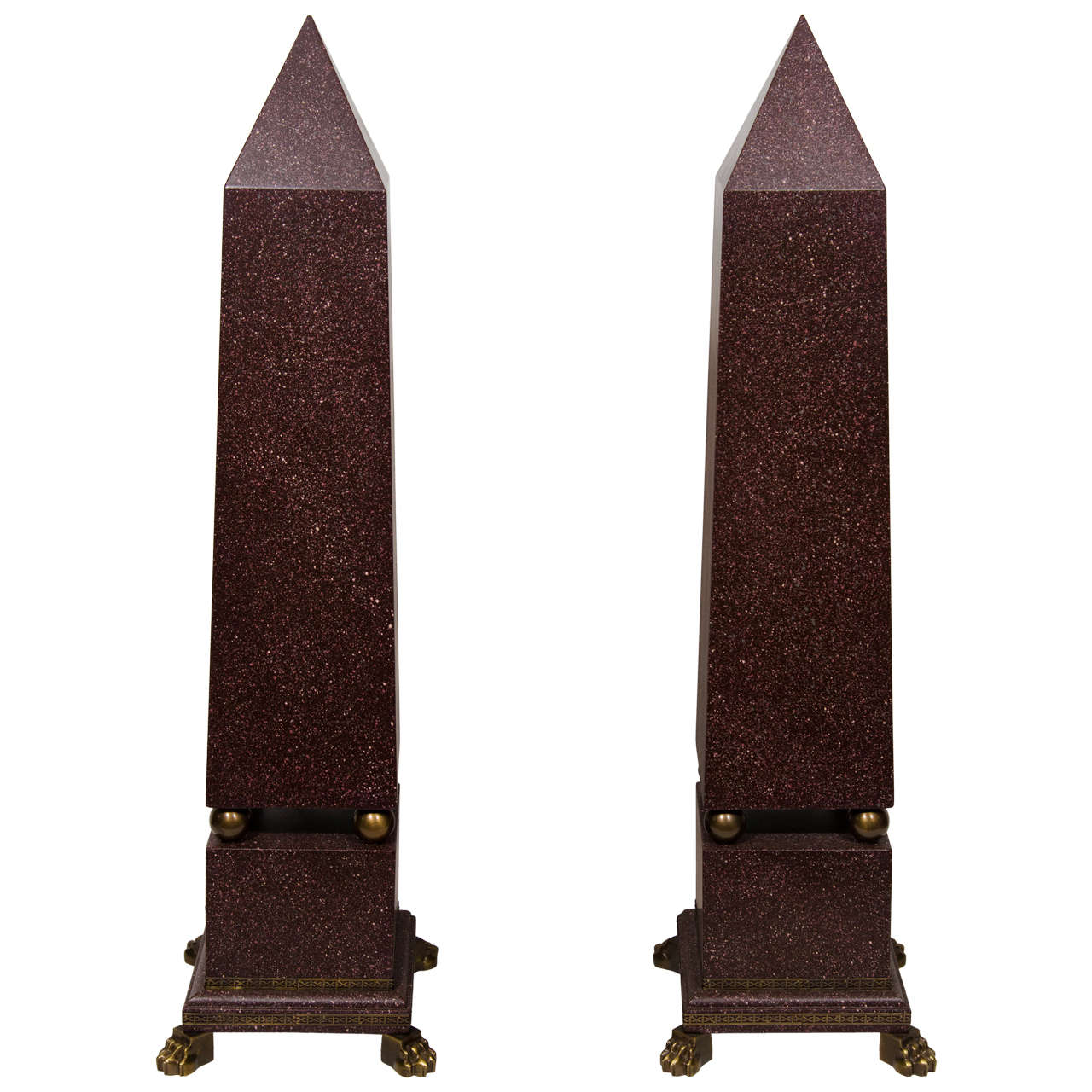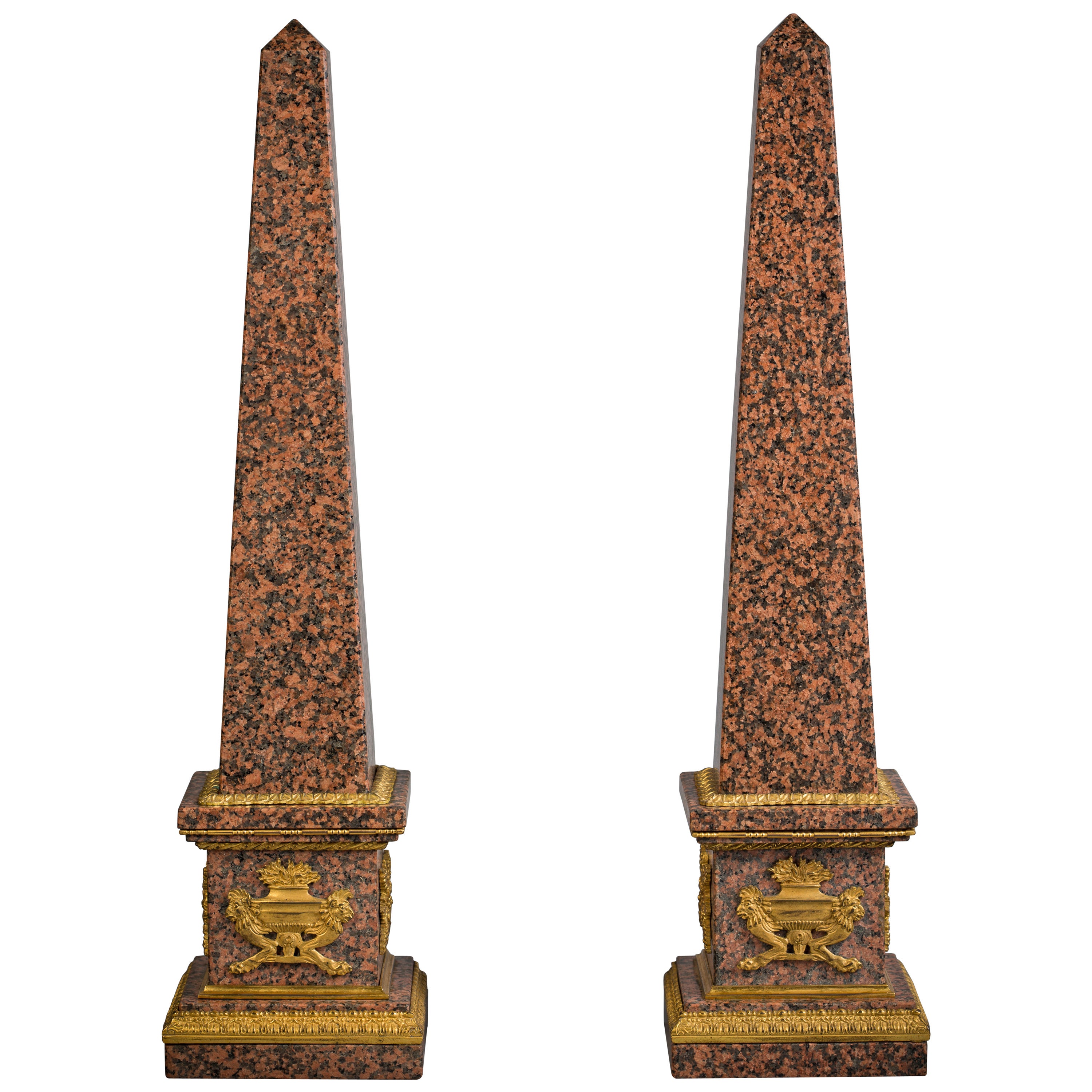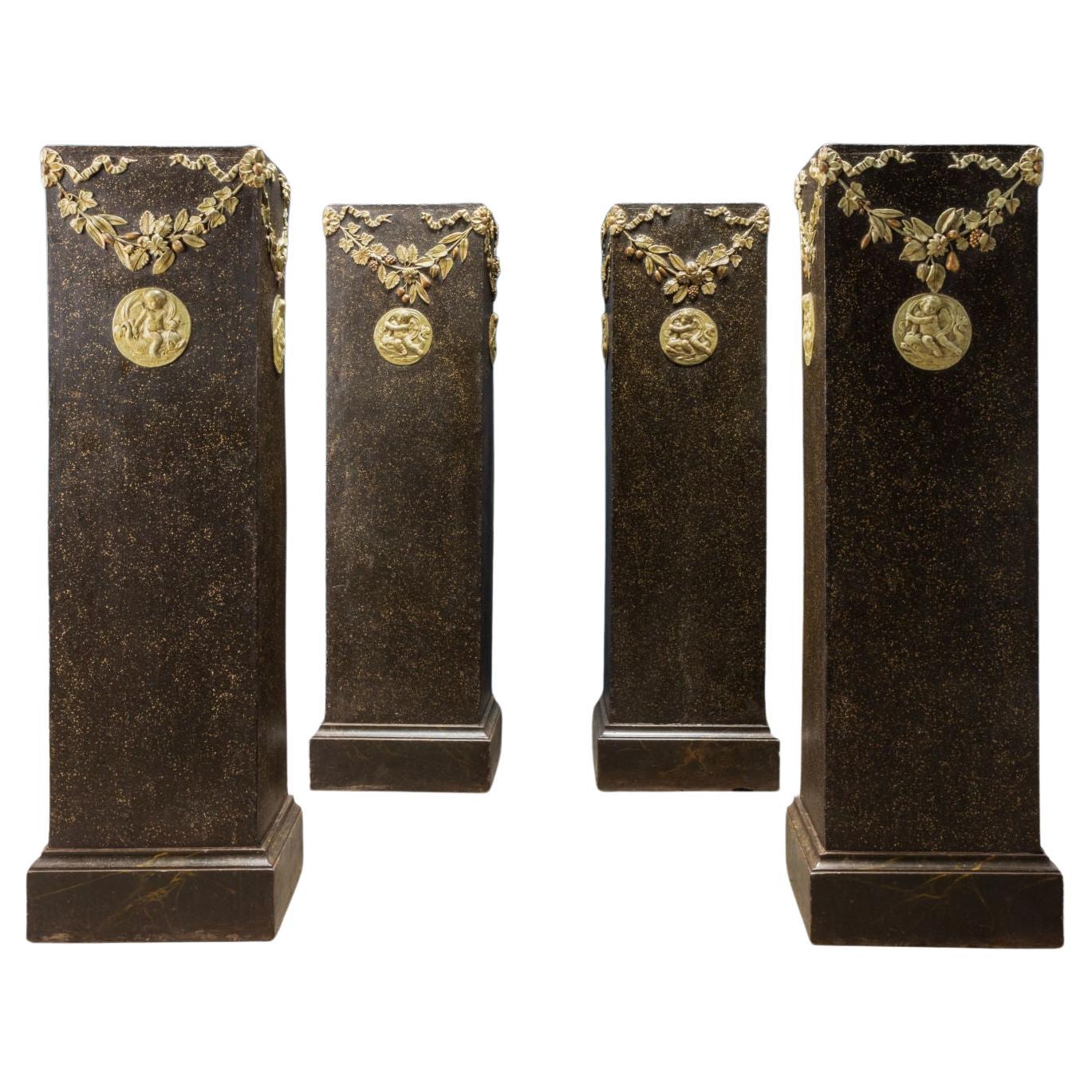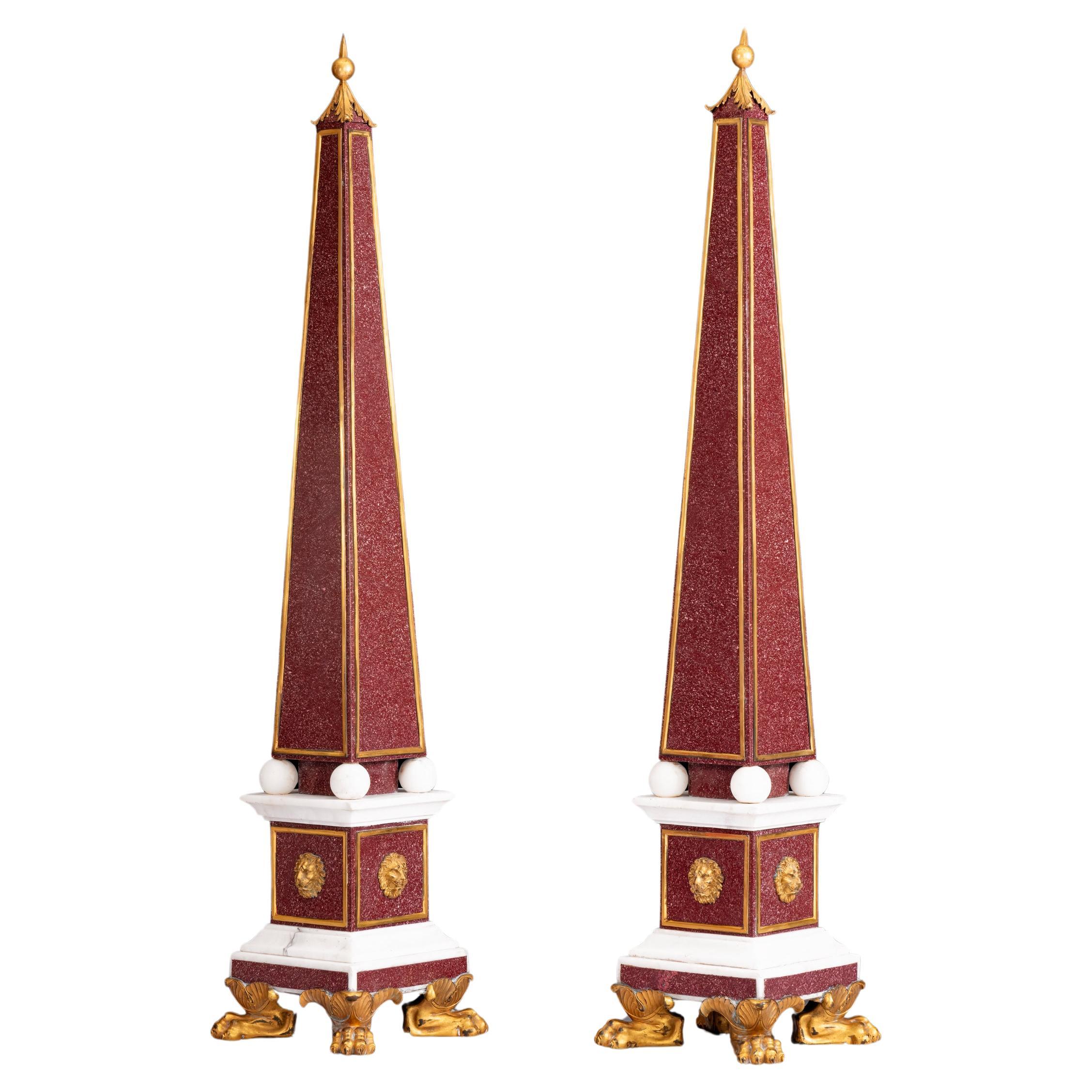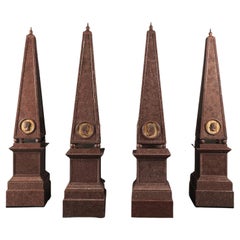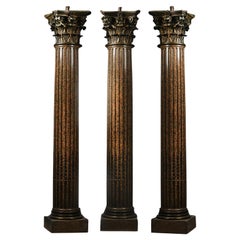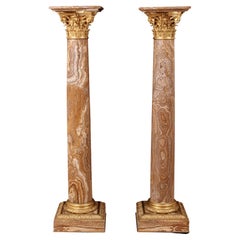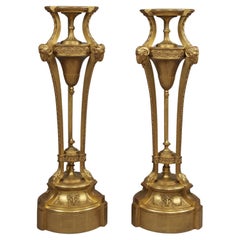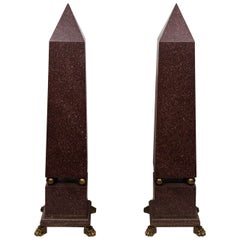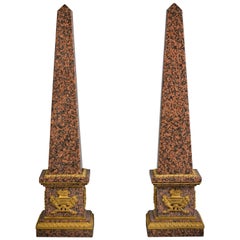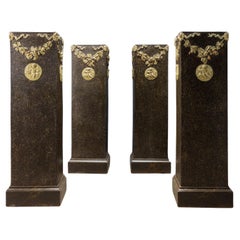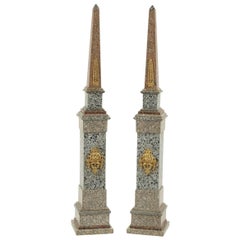Items Similar to A Set of Four Large Porphyry Obelisks With Roundels of the Roman Emperors
Want more images or videos?
Request additional images or videos from the seller
1 of 12
A Set of Four Large Porphyry Obelisks With Roundels of the Roman Emperors
$117,246.29
£85,000
€100,139.36
CA$161,049.16
A$179,077.42
CHF 93,750.25
MX$2,187,464.11
NOK 1,178,064.38
SEK 1,108,205.64
DKK 747,533.41
About the Item
An Important Set of Four Large Porphyry Obelisks.
Each obelisk is of square section tapering form with a spiked orb finial and embellished with carved roundels of the twelve Roman Emperors in profile. The main body is raised on ball supports putdown on square sectioned plinth bases.
Each obelisk is carved with three Emperors profile medallions on a alabaster ground and the fourth medallion inscribed with the names and dates of the Emperors:
GALBA 68.69 OTHO 68.69 VITALLIUS G8.68,
VESPANISIANUS 69.79. TITUS 69.81. DOMITIANUS 81.96
IVULI 48.44 AVGVST 27.14 TIBERIVS 14.37.
CALIVULA 37.41. CLAUDIVS 41.54. NERO 54.68.
Italian, 20th Century.
Porphyry is a remarkably hard, durable rock, which in antiquity derived its name from the fact that its intense, dark red colour, speckled with white inclusions, is similar to the purple colour called purpura by the Romans. The name was extended by association to the massif where porphyry was quarried in Egypt, which the Romans called Mons Porphyrites.
The Romans began to quarry porphyry in the First Century BC, employing it in such large quantities that by the Fifth Century AD the quarries were nearly exhausted. It was used extensively for monumental elements, and it became invested with an Imperial symbolism, perhaps on account of its analogy with the purpura, which from ancient times had been seen as the perogative of regal dignity. The use of Porphyry was in fact limited by Diocletian to the Imperial family.
The Romans used this porphyry for the Pantheon's inlaid panels, for the togas in the sculpted portraiture of their emperors, and for the monolithic pillars of Baalbek's Temple of Heliopolis in Lebanon. Today there remain at least 134 porphyry columns in buildings around Rome, all reused from imperial times, and countless altars, basins and other objects.
Byzantium, too, was enamoured of porphyry. Constantine the Great celebrated the founding of his new capital, Constantinople (later Istanbul), in the year 330 by erecting there a 30-meter (100') pillar, built of seven porphyry drums, or cylinders, that still stands. Eight monolithic columns of porphyry support Hagia Sophia's exedrae, or semicircular niches. Justinian's chronicler, Procopius, called the columns "a meadow with its flowers in full bloom, surely to make a man marvel at the purple of some and at those on which the crimson glows."
Porphyry served the imperium in death as well as birth. Nero was the first emperor to be entombed in a porphyry sarcophagus, according to Suetonius. Constantine's porphyry sarcophagus has been lost, but that of his wife Constantia, decorated with peacocks, lambs, and grapes and thought to be a copy of his, is now in the collection of the Vatican Library. Those of the Holy Roman Emperors Frederick II, Henry IV and William I, and that of the Empress Constance, all porphyry, are in Sicily's Palermo and Monreale cathedrals.
In later centuries, porphyry columns and other pieces were widely reused in new constructions, often reappearing far from their original Roman context. In 786, Charlemagne received permission from Pope Hadrian to remove classical columns of porphyry from Rome to build his cathedral at Aachen.
This sacred and celebrative significance of Porphyry continued to be greatly appreciated in the Renaissance courts and it was to become a much sought after material by Sixteenth Century collectors. In Florence, Grand Duke Cosimo I, had a particular liking for this stone and sponsored its use in large-scale sculptural works. Given that the ability to execute large sculptural works in this arduous material had long since been lost, such works represented a remarkable technical accomplishment.
- Dimensions:Height: 76.78 in (195 cm)Width: 15.75 in (40 cm)Depth: 15.75 in (40 cm)
- Style:Neoclassical (In the Style Of)
- Materials and Techniques:
- Place of Origin:
- Period:
- Date of Manufacture:20th Century
- Condition:Wear consistent with age and use.
- Seller Location:Brighton, GB
- Reference Number:Seller: B684201stDibs: LU1028035174842
About the Seller
5.0
Recognized Seller
These prestigious sellers are industry leaders and represent the highest echelon for item quality and design.
Established in 1964
1stDibs seller since 2014
58 sales on 1stDibs
Typical response time: 6 hours
Associations
The British Antique Dealers' AssociationLAPADA - The Association of Arts & Antiques Dealers
- ShippingRetrieving quote...Shipping from: Brighton, United Kingdom
- Return Policy
Authenticity Guarantee
In the unlikely event there’s an issue with an item’s authenticity, contact us within 1 year for a full refund. DetailsMoney-Back Guarantee
If your item is not as described, is damaged in transit, or does not arrive, contact us within 7 days for a full refund. Details24-Hour Cancellation
You have a 24-hour grace period in which to reconsider your purchase, with no questions asked.Vetted Professional Sellers
Our world-class sellers must adhere to strict standards for service and quality, maintaining the integrity of our listings.Price-Match Guarantee
If you find that a seller listed the same item for a lower price elsewhere, we’ll match it.Trusted Global Delivery
Our best-in-class carrier network provides specialized shipping options worldwide, including custom delivery.More From This Seller
View AllImportant Set of Four Large Porphyry Obelisks
Located in Brighton, West Sussex
An important set of four large Porphyry Obelisks.
Each obelisk is of square section tapering form with a spiked orb finial and embellished with carved roundels of the twelve Roman Emperors in profile. The main body is raised on ball supports putdown on square sectioned plinth bases.
Each obelisk is carved with three Emperors profile...
Category
Antique 19th Century Italian Neoclassical Pedestals and Columns
Materials
Porphyry
Three Neoclassical Style Corinthian Columns After Pierre Gouthière
By F. Barbedienne Foundry
Located in Brighton, West Sussex
A Set of Three Neoclassical Style Gilt-Bronze and Rose Granite Corinthian Columns After The Model by Pierre Gouthière.
Each acanthus leaf to the capitals individually cast. The qu...
Category
Antique 19th Century French Neoclassical Pedestals and Columns
Materials
Granite, Bronze
Pair of Louis XVI Style Gilt-Bronze Mounted Pedestals
By Pierre Gouthiere
Located in Brighton, West Sussex
A Pair of Louis XVI Style Gilt-Bronze Mounted Alabastro Fiorito Antico Pedestal Columns.
The pedestals are of classical form with finely figured Alabastro Foiorito columns and gilt...
Category
Antique 19th Century French Louis XVI Pedestals and Columns
Materials
Alabaster, Bronze
Pair of Giltwood and Gesso Pedestals
By Robert Adam
Located in Brighton, West Sussex
A pair of giltwood and Gesso pedestals, in the manner of Robert Adam.
Each pedestal having a circular top with a waisted fluted socle, on ram's-mask headed acanthus-carved fluted monopodia, raised on a tiform-plinth with lion's paw feet.
This neoclassical design is modelled after the antique Greek tripod...
Category
Antique 19th Century English Neoclassical Pedestals and Columns
Materials
Gesso, Giltwood
A Pair of Napoléon III 'Corinthian' Pedestals, Attributed Maison Millet
By Maison Millet
Located in Brighton, West Sussex
A Pair of Napoléon III Gilt-Bronze and Marble 'Corinthian' Pedestals, Attributed to Maison Millet.
Each with square rouge griotte marble top and column. The Corinthian capitals fine...
Category
Antique 19th Century French Napoleon III Pedestals
Materials
Marble, Ormolu
Pair of Louis XVI Style Gilt-Bronze Mounted Mahogany Pedestals, circa 1900
Located in Brighton, West Sussex
A pair of Louis XVI style gilt-bronze mounted mahogany pedestals.
French, circa 1900.
Each pedestal is of tapering square section with gilt bronze garlands and acanthus bands.
Category
Antique Late 19th Century French Louis XVI Pedestals and Columns
Materials
Bronze
You May Also Like
Pair of Large Grand Tour Style Faux Porphyry and Gilt Bronze Obelisks
Located in New York, NY
A Pair of Spectacular and very Large Grand Tour Style gilt bronze mounted faux Porphyry obelisks. Each very large faux Porphyry Obelisk is of square section tapering form with a shar...
Category
20th Century Italian Grand Tour Obelisks
Materials
Bronze
Pair of Granite and Bronze Obelisks, Late 19th Century
Located in New York, NY
Pair of granite and bronze obelisks, late 19th century.
Category
Antique Late 19th Century French Obelisks
Materials
Granite, Bronze
Group of Four Neoclassical Vase Holder Columns Italy Last Quarter of the 18th
By Non-Standard Furniture and Lighting
Located in Milano, IT
Group of four columns with a square base, made of lacquered poplar wood with a marbled effect to emulate porphyry; decorated with pastille carvings, lacquered and illuminated in gold...
Category
Antique 18th Century and Earlier Italian Neoclassical Revival Obelisks
Materials
Poplar
Monumental Neoclassical Grand Tour Ormolu Mounted Marble Obelisks on Pedestals
Located in Elkhart, IN
A stunning pair of monumental neoclassical or Grand Tour style solid marble pink, gray, brown, and black obelisks on solid marble pedestals.
Italy, Cir...
Category
Early 20th Century Italian Grand Tour Natural Specimens
Materials
Marble
Pair Of Large Early 19th Century Porphyry Marble & Ormolu Mounted Obelisks
Located in Dublin, IE
An exceptional pair of Porphyry, marble and ormolu mounted Obelisks, of typical form surmounted with foliate-cast finial above ball feet, resting on a panelled plinth mounted with li...
Category
Antique 19th Century Italian Regency Obelisks
Materials
Marble, Porphyry, Ormolu
Pair of 19th Century Italian Neoclassical Style Marble Obelisks
Located in Houston, TX
Pair of 19th century Italian Neoclassical style marble obelisks.
Classic pair of Antique Italian marble obelisks with a crest. These Italian Neoclassical style marble obelisks would...
Category
Antique 19th Century Italian Neoclassical Obelisks
Materials
Marble
